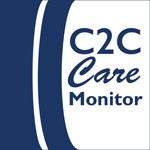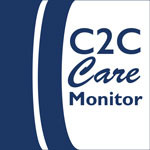Archaeological Conservation Ethics
- This topic has 4 replies, 3 voices, and was last updated 8 years, 7 months ago by
 Quinn Morgan Ferris.
Quinn Morgan Ferris.
-
AuthorPosts
-
-
September 15, 2015 at 8:07 pm #134109
Irina Henthorne
ParticipantI am a graduate student at George Washington University in their Museum Training program. I have a general question that I would like to pose.
In conservation there are ethics to what, when, and how objects are conserved. My understanding of the general notion is to do the minimal amount, and keep it reversible. Part of an item’s value is in how it was used, so use wear and residues can be important to keep. With knowledge of an artifacts initial condition, use, storage, and intentions of the maker a level of status quo can be maintained in order to maintain the integrity of an object both physically and intellectually.
My question: how does this sense of ethical conservation/preservation apply to archaeological object? Quite often objects obtained through archaeology are already highly deteriorated, for example many iron artifacts are at the point of falling apart. So, how can a conservator determine how much conservation is needed that will maintain both the physical and intellectual integrity of an archaeological artifact?
-
September 16, 2015 at 9:23 am #134110
 Quinn Morgan FerrisParticipant
Quinn Morgan FerrisParticipantHi Irina,
Thank you for your question. Since I have limited experience regarding archaeological conservation, I would like to direct your question to someone with more knowledge of the field to answer properly. Someone should be able to get back with you shortly.
That said, I would offer that in my training it was emphasized by my instructors and supervisors that archaeology is, in a sense, destructive by its very nature. Therefore, it is indeed a balance that depends both on rigorous documentation of the context from which the object is taken as well as the extent to which objects are treated or not treated.
Additionally, I would direct you to IIC’s 1996 Preprints, title “Archaeological Conservation and its Consequences”, which can be found, I believe, in its entirety here: http://www.researchgate.net/profile/Tania_Oudemans/publication/272165753_ORGANIC_RESIDUE_ANALYSIS_IN_CERAMIC_STUDIES_IMPLICATIONS_FOR_CONSERVATION_TREATMENT_AND_COLLECTIONS_MANAGEMENT/links/54dcc5d80cf28a3d93f86fe2.pdf
-
September 16, 2015 at 1:14 pm #134112
 Quinn Morgan FerrisParticipant
Quinn Morgan FerrisParticipantMy apologies–this link only contains a single article. The bibliographic information for this publication is below. I would suggest trying to get the full text via your university library.
Bibliographic information
Title: Preprints of the Contributions to the Copenhagen Congress, 26-30 August 1996: Archaeological Conservation and Its Consequences
Editors: Ashok Roy, Perry Smith
Publisher: International Institute for Conservation of Historic and Artistic Works, 1996
Length: 220 pages
-
-
September 17, 2015 at 5:33 am #134113
 Rachael ArensteinParticipant
Rachael ArensteinParticipantDear Irina,
Your questions are good ones that conservators wrangle with on an ongoing basis. For the most part you are correct, our training nowadays emphasizes minimal treatments. Since so much is still unknown it can be considered hubris to do more than necessary to preserve a piece. And reversibility is also an important core principle even while we recognize that certain types of treatments such as consolidation or certain materials are, in practice, difficult if not impossible to reverse. So we take these principles into account when we devise our treatment but that sometimes means that we simply have to carefully justify and document materials and actions that don’t meet those guidelines.You are also correct that we recognize that use, wear and residues form an important, interesting and useful part of the history of a piece so that too factors into treatment. I’ll try to give you a few examples of my thought process.
I am the conservator at the Bible Lands Museum Jerusalem, a collection of archaeological artifacts which, for the most part, was purchased on the art market over decades. the museum is only 23 years old but the collection is older than that and of course the artifacts are ancient! Much of the collection (although certainly not all) has been treated prior to collection by the founder of our museum and I have little to no information on treatments performed before the museum opened. There is an emphasis on aesthetics in our galleries and many, although again not all, of the pieces are highly restored. Copper alloy artifacts in our galleries have generally been heavily cleaned to remove corrosion products but, to give one example, We have a set of cymbals that were not cleaned because the corrosion preserved a textile pattern that gives interesting information about its burial environment. Since most of the pieces I am asked to examine have already been treated in the past I am generally dealing with an artifact where a restoration is no longer considered accurate or aesthetically appropriate, where there is active deterioration, or where there was some recent damage. Generally any signs of use or residues if they existed are long gone in these pieces.
My approach to treatment with artifacts in the museum collection has to take into account whether I am treating the piece to go on exhibit or whether it is being requested for study. When requested for study I speak with the curator or researcher to understand what they are interested in. Do they need corrosion to be removed to see surface detail, do they need the piece reconstructed to give a better sense of its shape and profile?
You mentioned iron artifacts as an example in your query. In our storage rehousing project I recently came across a box of iron implements. They are heavily corroded with active delamination and flaking. I highly doubt these pieces will ever be of high priority interest for research or exhibition in our collection, so instead of investing time in any kind of active treatment they were rehoused in a sealed low RH environment.
My approach to treatment at the BLMJ can sometimes contrast with what I do as the conservator for the Tel Gezer archaeological excavations. There I am receiving material straight from the ground. This past season uncovered a number of heavily corroded iron artifacts. One large one is of particular interest to the archaeologists so that artifact will get a full treatment to allow it to be studied. Removing the corrosion is of course irreversible but without doing that it is hard to tell what the artifact even is. So in this case I would argue that the irreversible treatment is facilitating the intellectual integrity of the artifact. I might also treat some of the excavation’s copper alloy artifacts more aggressively than I would in the museum. I can place our museum artifacts in a low RH environment. All but the most interesting of the Tel Gezer artifacts, will wind up in long-term storage in facilities that generally do not have tightly controlled environments. So I am more likely to consider an interventive treatment with a corrosion inhibitor since I can’t rely on a working HVAC system or silica gel that needs yearly maintenance.
While I like to see my job as preserving cultural heritage for generations to come, the question is preserving it for what? Putting everything into a box in a cold dark room would preserve a lot of it nicely – but to what purpose? On a practical level my job is to enable curators, researchers and archaeologists to use the collection while minimizing risk. So the questions I constantly ask are whether the treatments I’m doing allowing the piece to be used in a way that is important or preserved for future use. Sometimes the answer, like with the museum iron artifacts is indeed sticking it into a dark dry box! Other times only the interventive actions allow the artifact to fulfill a reason for being in the collection or justify the work in its excavation.
In addition to the useful reference that Quinn mentioned, there are some interesting articles and books on the start of a reading list on conservation decision making found on AIC’s wiki site at http://www.conservation-wiki.com/wiki/Conservation_Ethics
Best,
Rachael -
September 17, 2015 at 9:37 am #134115
 Quinn Morgan FerrisParticipant
Quinn Morgan FerrisParticipantFrom a colleague:
Conservation decision-making for archaeological objects, like most areas of conservation, is really determined on a case-by-case basis and is context driven. On excavations finds are typically valued as data more than art objects. The data a find may provide may be different for different stakeholders. Ceramic specialists may be more interested in reading the fabric of a sherd’s break edge, while an art historian may be more interested in reconstructing a vessel’s profile. Geoarchaeologists may find more value in the soil clinging to an object than the object itself. Same with corrosion – corrosion products may tell more about the object (what it was once part of or next to) than the the object’s deteriorated remains. Indeed since many finds are in varying states of deterioration, the notion of a discrete “object” may not even apply. In this regard conservation can be very subjective; frequently one aspect of a find or object’s state is altered for the sake of another’s legibility. In general conservation should strive towards maintaining as much of the object’s integrity (material/scientific/conceptual) as possible, with the understanding that one intervention may inhibit or preclude the current or future legibility of other aspects of its integrity. Conservation decision making should try to strike a balance between immediate interests of current stakeholders (material stabilization, selective cleaning) and the potential interests of future stakeholders (e.g. scientists), although this may be hard to prognosticate. If possible, a conservator should try to leave as many “doors open” as possible. This is frequently a judgement call – conservation interventions are frequently intersubjective negotiations rather than objective surgeries. It’s important that any action – or conscious inaction – is carefully considered.
Brian Castriota
Time-Based Media & Archaeological Conservator bcastriota@gmail.com
-
-
AuthorPosts
- The forum ‘Connecting to Collections Care Forum Archives – 2015 through 2018’ is closed to new topics and replies.




